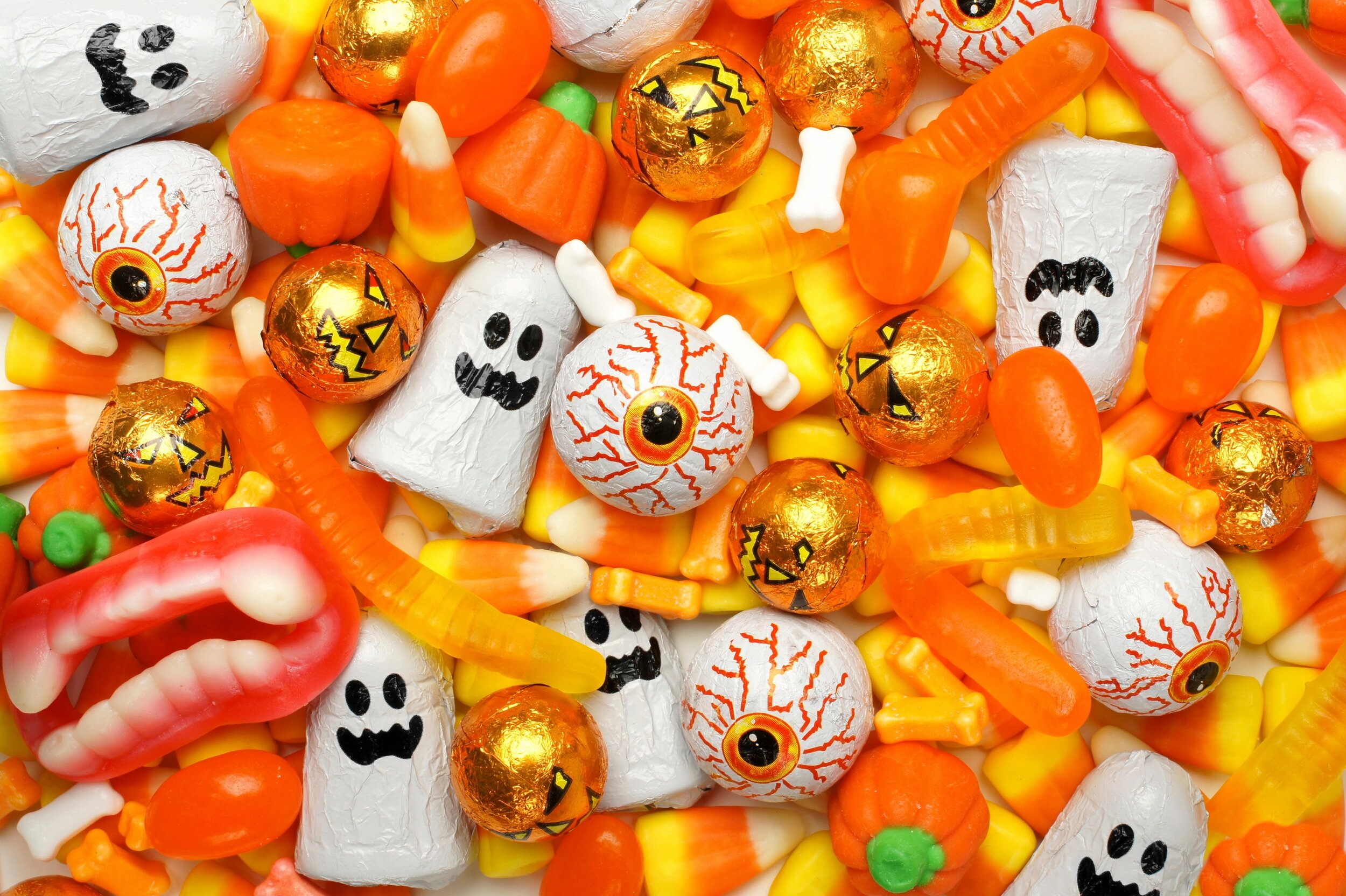What's Really In Your Kids' Candy?
Peeling Back The Wrapper On The Ingredients In Halloween Treats
Sugar-laden sweets are a Halloween staple, but there’s much more to these treats than sugar. There are other ingredients in candy that may surprise you.
So what makes a fruit-flavored chew candy so brightly colored or keeps a chocolate-coated caramel candy bar smooth and creamy on the shelf until it’s purchased? The ingredient label holds the answer. Scan the fine print and you’ll find oddly named additives or perplexing-sounding oils that might make you ponder.
“There are over 10,000 chemicals found in foods, which include food additives, colors and dyes, natural or artificial flavors deemed ‘generally recognized as safe,’ pesticides, and more,” says Shira Sussi, MS, RD, CDN, a clinical dietitian at NewYork-Presbyterian’s Ambulatory Care Network. “These additives range from harmful if consumed in excess to additives that provide no nutritional value other than calories, like corn syrup.”
So what exactly are carmine, carnauba wax, and TBHQ, and why are these ingredients in so many of your kids’ favorite candies? Here is a list of common ingredients found in an assortment of popular packaged sweets and what you should know about them.
Ingredient: Corn Syrup/High Fructose Corn Syrup
Examples: many candy bars such as Snickers, Baby Ruth, Whatchamacallit; hard candies such as Life Savers; chewy candies like candy corn
Description: Both are added sweeteners made from corn. Corn syrup is 100 percent glucose. High fructose corn syrup (HFCS) is processed to be nearly identical to table sugar and is often used in products that have to be extra sweet. Other than its sweetness, HFCS provides a soft, moist texture in chewy snack bars and other baked goods. It also helps prolong freshness.
Ingredient: Artificial Flavor
Examples: Tootsie Roll, Jolly Rancher, Werther’s Original, Kraft Caramels
Description: Companies use natural and artificial (synthetic) flavorings (sometimes both) to make their food taste better. That’s because certain flavors are difficult and expensive to replicate in processed foods. To achieve a familiar, mouthwatering taste of natural food, manufacturers combine chemicals to imitate a real taste. Natural flavors are from plants or animals while artificial flavors are synthesized in a lab. Typically, the individual chemical ingredients of the flavors aren’t listed.
Ingredient: Monoglycerides/Diglycerides
Examples: Chocolate bars, taffy, Chewy SweeTarts
Description: Monoglycerides and diglycerides are emulsifiers, which means they help oil and water to blend. These ingredients in candy are added to make them consistent in texture, creamier, and less sticky and to allow them to dissolve easily. These synthetic fats are often derived from vegetable oils (soybean, sunflower) or animal products (beef or pork).
Ingredient: TBHQ
Examples: Butterfinger, Reese’s Peanut Butter Cups, 5th Avenue
Description: This synthetic antioxidant stands for tertiary butylhydroquinone. It helps extend the shelf life of candies by delaying oxidation and rancidity, helping food to maintain its nutritional value longer. The Food and Drug Administration regulates how much TBHQ can be added to foods because high doses of it can be toxic or fatal.
Ingredient: Partially Hydrogenated/Hydrogenated oils
Examples: Mary Jane, Snickers, Three Musketeers
Description: Partially hydrogenated oils (PHOs) are those that have been turned from a liquid to a semisolid. Used to increase shelf life and give foods a desirable texture, this man-made trans fat has been proved to raise the bad kind of cholesterol levels in our body and lower the good kind, resulting in higher heart disease risk. The FDA ordered PHOs removed from food products by June 18, 2018. But many candies also have hydrogenated oils, which don’t have trans fat but do have saturated fat, which is not good for us, either.
Ingredient: Red 40 or Yellow 5
Examples: Hot Tamales, Skittles, Starburst
Description: These dye colors are derived from petroleum and are used to give candies their bright colors. They contain benzidine, a human and animal carcinogen that, at low levels as permitted in dyes, is considered safe.
Ingredient: Carnauba wax
Examples: Chocolate-coated candies, Red Hots, Atomic Fireballs, Warheads, Swedish Fish
Description: This natural, food-grade wax is derived from the leaves of the Carnauba palm and is used to coat or glaze candies for that attractive, shiny sheen. It’s also used in car wax.
Ingredient: Gelatin
Examples: Gummies, Junior Mints, Peeps
Description: A thickening agent that is obtained from the protein collagen, which is made from boiling animal bones and skin like beef and pork in water. It’s also found in other foods such as yogurt, Jell-O, and ice cream, and some shampoos, face masks, and makeup.
Ingredient: Carmine
Examples: Rainbow Mentos, many red and pink candies
Description: This ancient red pigment/dye is a color additive. Derived from dried cochineal bugs, it’s used to create brightly hued candies. The FDA ruled that because the additive causes an allergic reaction in some consumers, it must be called out on food labels. Carmine is also found in some makeup items like lipstick and eye shadow.
Ingredient: Lecithin
Examples: Almond Joy, M&M’s
Description: This emulsifier is mostly obtained from soybeans, sunflower seeds, or eggs. It’s often used in chocolate to prevent ingredients from separating, reduces stickiness, and creates a smoother texture. Be mindful of this ingredient for children who have protein allergies.
Sussi stresses that it’s important to understand not just the ingredients in candy, but in all foods being consumed. “Ingredients like high fructose corn syrup and partially hydrogenated oils I would recommend avoiding as much as possible — but these aren’t just in candies, they’re found in ketchup, breakfast cereals, and salad dressings,” she says.
When it comes to sweets, “I would ask yourself how often your children are eating candy with these additives,” she continues. “If it is a few pieces once a year on Halloween, the risk for most children having an adverse health outcome is low. If your child is eating foods with these additives daily, then yes, there may be cause for concern. Candy should be enjoyed in moderation; that goes for kids and adults alike.”






